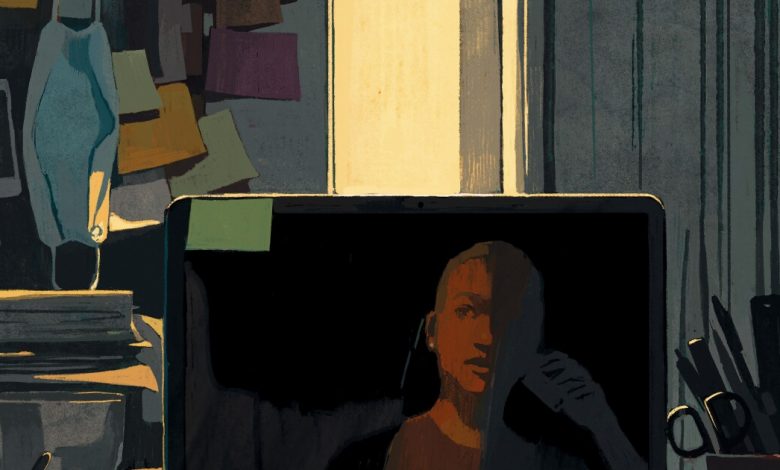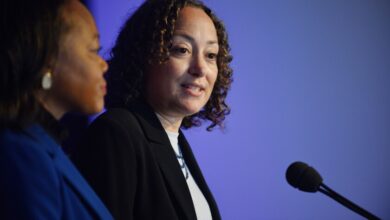What One University Learned About Pandemic Trauma and Its Work Force

[ad_1]
When the University of Wisconsin at Milwaukee surveyed its employees last year about how the pandemic was affecting them, the results were alarming: Among the 631 university employees who responded, 73 percent reported having one symptom of post-traumatic stress disorder caused by the pandemic. Nearly 40 percent reported having three or more symptoms.
That’s not what you’d expect from people who generally have stable jobs and health insurance, said James (Dimitri) Topitzes, a professor of social work at UW-Milwaukee and co-founder and director of clinical services at the Institute for Child and Family Well-Being.
“For many people, the pandemic is not just an irritant,” Topitzes said. “It really destabilized folks.”
Those were among the findings that Topitzes and Adam Jussel, the dean of students, shared from a 2021 study of how faculty and staff members were coping with Covid and how the university could better support its roughly 6,700 employees. Most survey respondents were white women; 69 percent were staff members, 26 percent were faculty members, and 5 percent were student employees. Topitzes and Jussel soon hope to publish their work in a peer-reviewed journal.
According to the study, people who were younger, had caregiving responsibilities, experienced social isolation, or lost loved ones to Covid-19 were more likely to report symptoms of PTSD. “As stress accumulates, it can start to overwhelm coping skills and move into the terrain of traumatic stress,” Topitzes said.
Some of the findings were a mixed bag: While 30 percent of respondents said they weren’t optimistic about their careers or the future, 35 percent said their lives had improved during the pandemic.
Topitzes and Jussel, along with their co-authors, found that several strategies appeared to reduce the risk of PTSD symptoms. Some of them weren’t surprising: spending time outdoors, with pets, and with family or friends. But one was: working emerged as a successful coping mechanism.
Even though work was often a stressor for people over the past two years, it could also be a de-stressor — especially when the work was meaningful and involved social connection.
People didn’t want to be just answering emails and pushing papers, Topitzes said; they wanted to be taking on passion projects and collaborating with colleagues. Work also provided some human interaction at a time when people were feeling isolated, and offered people an opportunity to serve others, which research has shown to be beneficial for those experiencing trauma, Topitzes said.
Some university employees complained in the survey about increased workloads, resulting in large part from pandemic-era financial turmoil, furloughs, and hiring freezes. In the immediate term, there’s not much the university can do about staffing shortages.
But if managers cut back busywork and meetings and instead gave employees more creative outlets, that could help reduce frustration and avoid burnout, Topitzes said.
Jussel pointed to the cross-departmental campus-response teams that have formed during the pandemic, which have improved institutional communication and encouraged collaboration, as a potential model for the future.
‘Headwinds of Change’
In the survey, faculty and staff members shared wide-ranging thoughts on how the university workplace could change permanently to support their physical and mental health, even once the virus has receded.
There was near-unanimous agreement on one thing: They wanted a flexible schedule and work-from-home opportunities, forever. Nearly three-quarters of survey respondents said that working from home represented a life improvement, and more than 60 percent said they’d spent more time with family or friends during the pandemic.
Faculty members have traditionally had more flexibility than staff members, but that’s changing. Jussel said the office of the dean of students will now give its staff one or two remote-work days permanently. He hopes that’ll set UW-Milwaukee apart in a competitive job market.
Employees suggested allowing leaves of absence, creating affinity groups, devoting meeting time to check-ins about people’s well-being, rewarding staff for meeting goals instead of hours spent working, and reducing faculty-service requirements. Some survey respondents cited mandatory furloughs as particularly demoralizing and urged campus leaders to end the policy for good.
Faculty and staff members praised the university’s efforts to communicate more openly during the pandemic, and said they wanted that increased communication, such as regular town-hall meetings and email updates, to continue. They not only wanted to know how the university’s Covid-related planning was evolving; they also wanted to be kept updated on how the university was faring financially.
“People really enjoyed the idea that they could have a real-time conversation with the chancellor and senior leaders about tough stuff,” Jussel said. And they want those conversations to be two-way, with UW-Milwaukee leaders speaking candidly and listening to feedback.
As the university figures out how to navigate declining enrollment and budget woes in the next few years, faculty and staff members clearly want to be involved in the decision-making process, Topitzes said: “They want to potentially have some influence in the direction of this university, considering that we’re going to be facing really interesting headwinds of change.”
Employees were understanding that university leaders faced a conundrum when deciding whether to bring students and employees back for in-person learning, balancing public health and safety with the need for revenue from tuition and housing and dining services. In the survey, many praised the university’s science-based approach to dealing with Covid and the accessibility of testing and vaccines, and said they felt safe returning to campus.
In trying to be more trauma-informed, UW-Milwaukee — like many universities — has been sending messages about the importance of self-care. But that’s not enough, Topitzes said. People don’t only want to hear about “self-care” when they’re working long hours and feeling overwhelmed.
Topitzes and Jussel hope that publicly sharing their research will demonstrate that the university is taking pandemic-related trauma seriously, and that people who are struggling are not alone.
They have also published toolkits for faculty members and supervisors to incorporate support and resources into their classrooms and departments, and offered workshops for employees and student leaders to learn about trauma-informed practices.
The workshops have helped people process their own experiences, Jussel said.
“Folks are trying to name what is happening to them emotionally, sometimes physically,” Jussel said. “These workshops and the information and the data are particularly helpful, because I think they allow whatever that experience is to be named.”
[ad_2]
Source link






